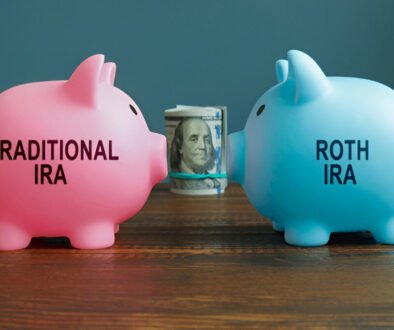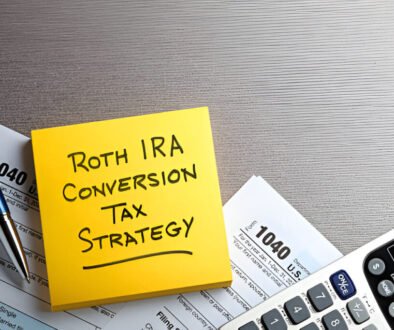Benefits of Starting an IRA for your child
What if I told you there’s a financial gift for your child that’s worth more than any toy or gadget? The average 18-year-old with a modest IRA could have over $1 million by retirement age, yet fewer than 5% of parents ever open one.
Weird, right? Most parents would do anything to secure their kid’s future, but completely overlook the benefits of starting an IRA for your child – arguably the most powerful head start you could possibly give them.
Here’s the thing though: it’s not entirely your fault. The financial industry has done a terrible job explaining how kid IRAs actually work, who qualifies, and why the math is so ridiculously in your favor when you start this early.
And that little-known loophole about how your teenager can contribute? That’s where things get really interesting.
Understanding the Long-Term Financial Benefits
Harnessing the Power of Compound Interest Over Decades
When your child has 40+ years before retirement, compound interest becomes almost magical. Starting an IRA for your 10-year-old isn’t just cute—it’s financial genius.
Here’s the real deal: $1,000 invested at age 10 can grow to over $88,000 by age 65 (assuming a 8% average annual return). That same $1,000 invested at age 30? Only about $18,000 at retirement.
The difference is staggering. And it’s not because you’re investing more money—it’s because time is doing the heavy lifting.
Think about this: even modest contributions of $500 annually from age 10 to 18 (just $4,500 total) could potentially grow to over $236,000 by retirement age without adding another penny after age 18.
Building Substantial Retirement Funds Before Adulthood
Your kid could be a millionaire before they even understand what retirement means. Really.
If your child earns just $2,000 yearly from age 15-18 and you help them contribute that to a Roth IRA, those four years of contributions ($8,000 total) could grow to nearly $500,000 by retirement.
What most people don’t realize is that you can’t make up for lost time. A teenager who starts investing has an advantage that even a high-earning 30-year-old professional can’t match.
And here’s the kicker—this money grows tax-free in a Roth IRA. Every penny of that growth is theirs to keep.
Creating Financial Security Through Early Planning
Starting an IRA for your child isn’t just about money—it’s about mindset.
Children who grow up with IRAs understand investing fundamentals before they’ve even graduated high school. While their peers are figuring out what a 401(k) is at their first job, your child will already have decades of investment experience.
This head start creates a psychological safety net. Your child will grow up knowing they’ve got a foundation—something many Americans never feel.
Plus, they’ll understand concepts like:
- Investment diversification
- Market volatility and patience
- The true cost of withdrawing early
- The relationship between risk and reward
These aren’t just financial lessons—they’re life skills that build confidence and security.
Reducing Future Financial Stress for Your Child
The retirement crisis is real. About 40% of Americans worry they’ll run out of money in retirement. Your child won’t be one of them.
By starting an IRA early, you’re not just giving them money—you’re giving them freedom. Freedom from:
- Working past retirement age out of necessity
- Depending on Social Security as their primary income
- Making desperate investment decisions later in life
- Living with the anxiety of insufficient savings
The peace of mind that comes with financial preparation is immeasurable. While their future friends might be frantically maximizing contributions in their 40s and 50s, your child can make choices based on passion rather than panic.
And honestly, isn’t that what we all want for our kids? The freedom to choose their path without money anxiety hanging over their heads?
Tax Advantages of Child IRAs

A Roth IRA for your child might just be the jackpot.
With a Roth IRA, your child’s money grows completely tax-free. That’s right—they’ll never pay taxes on the earnings when they withdraw in retirement. Think about that for a second. Money invested when they’re 15 could multiply many times over by age 65, and Uncle Sam won’t take a penny of those gains.
Here’s what makes this so powerful: A 15-year-old who invests just $1,000 in a Roth IRA could potentially have over $32,000 by retirement (assuming 7% annual returns). All that growth? 100% tax-free.
Tax-Deferred Growth in Traditional IRAs
Traditional IRAs work a bit differently but pack their own punch. While contributions might be tax-deductible now, the real magic happens inside the account.
Your child’s investments grow tax-deferred, meaning no taxes on dividends, interest, or capital gains each year. This tax-sheltering supercharges compound growth over decades.
The tax bill only comes due when they withdraw in retirement—likely when they’re in a lower tax bracket than their peak earning years.
Teaching Tax Strategy at a Young Age
Starting an IRA for your kid isn’t just about money—it’s about education. By involving them in the process, you’re teaching real-world financial literacy that schools often miss.
Kids who understand tax advantages early develop strategic thinking about money. They learn:
- How government incentives shape financial decisions
- The value of long-term planning versus instant gratification
- How different account types serve different goals
- The power of compound interest working alongside tax benefits
These lessons stick because they’re attached to their own real money, not hypothetical examples.
Potential Tax Benefits for Parents as Account Custodians
As the custodian of your child’s IRA, you might snag some tax perks too.
If you own a family business, hiring your child and directing some of their earnings to an IRA could potentially reduce your business taxes. The money stays in the family while creating tax advantages on multiple fronts.
Some parents also use this arrangement to teach kids about income taxes by showing them real pay stubs with tax withholdings and explaining how their IRA contributions affect their tax situation.
Maximizing Annual Contribution Benefits
The IRA contribution limit for 2025 is $7,000 (for those under 50). While that might seem like a lot for a teenager, even partial contributions pack serious punch over time.
Consider matching your child’s contributions to encourage saving—perhaps 50 cents for every dollar they put in. This teaches them about employer matching in future 401(k) plans.
Remember that contributions can only come from earned income. If your child makes $3,000 babysitting or mowing lawns, that’s their maximum contribution limit for the year.
The beauty here? Even small, consistent contributions create massive results thanks to the decades of tax-advantaged growth ahead.
Educational Opportunities Through Financial Planning

Teaching Real-World Money Management
Opening an IRA for your child isn’t just about securing their financial future—it’s a powerful teaching tool. Kids learn by doing, and managing an investment account gives them real stakes in understanding money. Sit down with them quarterly to review statements, explaining how contributions grow over time.
Make it tangible by setting goals together. Maybe they want to save for college, a car, or their first home. When they connect their future dreams to those growing numbers, abstract concepts suddenly become personal.
Try this approach: let them contribute a portion of allowance or gift money to their IRA. When they choose between spending now or investing for later, they’re practicing the exact decisions they’ll face as adults.
Demonstrating the Value of Long-Term Investments
Nothing teaches compound interest like watching it happen with your own money. Most adults struggle to grasp how powerful time is in investing—your child gets to see this magic unfold over decades.
Show them simple projections:
- $1,000 at age 10 could become $32,000+ by retirement (at 7% average return)
- $50 monthly from ages 15-18 could grow to $100,000+ by age 65
When market dips happen (and they will), use these moments to explain market cycles. These lessons hit differently when it’s their actual money experiencing the ups and downs.
Creating Hands-On Learning About Market Economics
An IRA creates countless teachable moments about how the economy works. As your child’s investments grow, you can explain:
- How companies they invest in create products and services
- Why diversification protects their money
- How world events affect markets and their savings
Consider letting them direct a small portion of their investments toward companies they understand and use. A kid who invests in Disney or Apple will suddenly pay attention to business news about those companies.
Building Financial Literacy From an Early Age
Financial literacy isn’t innate—it’s learned. And most schools simply don’t teach it well. By opening an IRA for your child, you’re filling this critical education gap.
Start with basic concepts when they’re young, then gradually introduce more complex ideas as they grow:
- Ages 5-10: Saving concepts, basic account statements
- Ages 11-14: Compound interest, different investment types
- Ages 15-18: Risk assessment, tax advantages, retirement planning
The confidence your child develops through managing their IRA will extend to other financial decisions. They’ll approach college, careers, and adult life with money skills many of their peers won’t develop until decades later—if ever.
Flexibility and Control Benefits

Custodial Account Management Until Adulthood
One of the coolest things about starting an IRA for your child? You’re in charge until they grow up. As the custodian, you make all the investment decisions and manage the account until your child reaches adulthood (typically 18 or 21, depending on your state).
Think of it as training wheels for their financial future. You get to guide their investment journey while they’re still figuring out the difference between a dollar and a dime. And honestly, would you trust a 10-year-old to manage their retirement portfolio anyway? Mine would probably invest it all in video game companies and candy manufacturers.
This arrangement gives you peace of mind knowing that the funds are being properly managed while simultaneously teaching your child about investing as they grow. Many parents use these accounts as powerful teaching tools – showing statements, explaining investment choices, and celebrating growth milestones together.
Investment Options Tailored to Long Time Horizons
Kids have something most investors would kill for: time. Tons of it.
When you’re investing for someone who won’t need the money for 40+ years, you can take advantage of investment strategies that might be too aggressive for your own retirement planning.
With a childhood IRA, you can:
- Focus on growth-oriented investments
- Weather market volatility without panic
- Potentially take on higher-risk, higher-reward opportunities
- Harness the magic of compound interest over decades
A 7-year-old with an IRA doesn’t need to worry about next year’s market performance. They’re playing the ultimate long game. This extended timeline means you can build a portfolio that maximizes growth potential rather than worrying about short-term stability.
Ability to Start With Small Contributions
Starting an IRA for your child doesn’t require massive amounts of cash. You can begin with whatever fits your budget – even $25 or $50 a month adds up dramatically over time.
Benefits of Starting an IRA for your child
The minimum initial investments for many custodial IRAs are surprisingly accessible:
| Provider | Minimum Initial Investment |
| Fidelity | $0 |
| Charles Schwab | $0 |
| Vanguard | $1,000 (waived for automatic monthly contributions) |
This low barrier to entry makes child IRAs accessible to families across various income levels. You might not be able to fund a full college education right now, but you can absolutely start building your child’s retirement nest egg with modest, consistent contributions.
Easy Transition to Adult Ownership at Age of Majority
When your child reaches adulthood, the transition process is remarkably straightforward. The account transfers from custodial status to full adult ownership, putting your now-grown child in the driver’s seat of their financial future.
This handover moment often becomes a meaningful financial milestone and teaching opportunity. The years of watching you manage their account serve as an apprenticeship of sorts, preparing them to take the reins with confidence.
Many financial institutions make this transition process seamless, requiring just a few forms and identity verification. And unlike some other custodial accounts, the child can’t simply empty the account and buy a sports car when they turn 18 – IRA withdrawal rules still apply, protecting those funds for their intended purpose: retirement security.
Setting Up Your Child’s IRA: Practical Steps

Choosing Between Roth and Traditional IRAs
Kids and taxes don’t usually go together in the same sentence, but when it comes to setting up an IRA for your child, tax considerations matter big time.
Roth IRAs typically win the popularity contest for kids, and for good reason. Your child can contribute after-tax dollars now (when they’re likely in a zero or very low tax bracket) and enjoy completely tax-free withdrawals in retirement. That’s decades of tax-free growth!
Traditional IRAs offer upfront tax deductions, but honestly, most kids don’t earn enough to benefit from the deduction. Plus, they’ll face taxes during retirement when they might be in a higher bracket.
Here’s a quick comparison:
| Roth IRA | Traditional IRA |
| No immediate tax benefit | Tax deduction on contributions |
| Tax-free growth | Tax-deferred growth |
| Tax-free withdrawals in retirement | Taxable withdrawals in retirement |
| Can withdraw contributions (not earnings) penalty-free | Early withdrawals generally penalized |
| Perfect for low-income earners (like most kids) | Better for those wanting immediate tax benefits |
Documentation Requirements for Child IRAs
Getting your paperwork ducks in a row is crucial when opening a child’s IRA. You’ll need:
- Your child’s Social Security Number
- Your ID as the parent/guardian
- Birth certificate or other proof of age
- Income documentation (this is super important!)
That last one trips up many parents. The IRS isn’t playing around – your child needs legitimate earned income. Keep detailed records of:
- Pay stubs if they have a regular job
- 1099 forms for independent contractor work
- Detailed records for informal work like babysitting or lawn mowing
- Photos of them working (not a bad idea)
Some parents even create formal invoices for work their children do in family businesses. Smart move.
Finding Kid-Friendly Financial Institutions
Not all financial institutions roll out the welcome mat for kid investors. Look for these features:
- Low or no minimum balance requirements
- No maintenance fees
- User-friendly online access
- Educational resources geared toward young investors
Fidelity, Charles Schwab, and Vanguard have solid reputations for child-friendly IRAs. Fidelity doesn’t require minimum investments for their youth accounts, which is a big plus when your child is just starting out with small contributions.
Online-only platforms like Betterment offer robo-advisory services that can be perfect for hands-off investing, though you’ll want to maintain some oversight as the parent.
Call potential institutions directly and ask specifically about their experience with custodial IRAs. If the representative seems confused or uncertain, that’s your cue to look elsewhere.
Establishing Contribution Strategies That Grow With Your Child
Starting small is perfectly fine. Remember, the habit matters more than the amount at first.
For younger kids (under 12), try matching their contributions dollar-for-dollar or setting up a “commission” system for chores that automatically directs a percentage to their IRA.
For teens with part-time jobs, consider this approach:
- 50% of earnings for spending/immediate goals
- 30% for college/mid-term savings
- 20% for retirement (IRA contributions)
As your child’s income grows, gradually increase the retirement percentage. By the time they’re earning serious summer job money, aim for contributing the maximum allowed (currently $7,000 annually for 2025).
Many parents use birthdays and holidays as “contribution boosters” – asking relatives to contribute to the child’s financial future instead of buying another toy that’ll be forgotten in a month.
Involving Your Child in Age-Appropriate Investment Decisions
Getting your kid involved isn’t just cute – it’s critical for their financial education.
Ages 5-9: Focus on basic concepts. Let them help count the money being deposited. Use simple charts to show how money grows over time.
Ages 10-13: Introduce basic investment concepts. Explain stocks as “owning a tiny piece of a company they know” like Disney or Apple. Let them pick one company they understand to follow (even if it’s just a small portion of their overall investments).
Ages 14-17: Dive deeper into asset allocation. Show them how their money is divided between stocks, bonds, and other investments. Discuss risk tolerance in ways they can understand – like comparing conservative investments to saving for something next year versus aggressive growth for retirement decades away.
By high school, involve them in annual portfolio reviews. Explain performance in real terms – “Your money grew enough to buy X this year just by being invested!”
Securing Your Child’s Financial Future
Starting an IRA for your child offers tremendous long-term financial benefits that can’t be overstated. From the power of compound interest working over decades to significant tax advantages that preserve more of your investment, a child’s IRA is truly a gift that keeps giving. Beyond the obvious monetary benefits, it creates valuable educational opportunities for your child to learn about financial responsibility, investment strategies, and the importance of planning for the future.
The flexibility to adapt the account as your child grows, combined with the ability to maintain appropriate parental oversight, makes a child’s IRA an ideal financial planning tool for families. By following the practical steps outlined above, you can establish this powerful financial foundation for your child today. Remember, the greatest advantage of all is time—and by starting now, you’re giving your child decades of financial growth potential that simply can’t be replicated by waiting until they’re adults.



